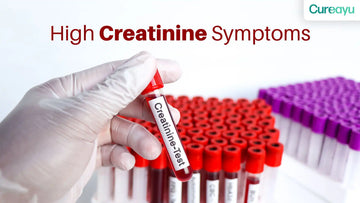Embolic stroke, an insidious and often life-threatening condition, affects countless individuals every year. Unlike other types of stroke, an embolic stroke occurs when a blood clot or debris forms elsewhere in the body and eventually travels to the brain, causing a sudden blockage of blood flow. Its onset can be rapid and without a definitive warning, making it a daunting adversary to patients and professionals alike. However, understanding the signs of embolic stroke and its underlying mechanisms can help in prompt medical intervention, potentially saving lives and reducing the likelihood of severe long-term disability.
In this blog, we'll delve deep into the world of embolic strokes; we'll uncover what exactly an embolic stroke is, explore its symptoms, investigate the causes, understand how it is diagnosed, and look at potential treatments. By equipping ourselves with this knowledge, we can hope to curb its devastating impact, offering a beacon of hope to those at risk.
Also Read: What Is Hemorrhagic Stroke? Symptoms, Causes & Treatment
What is Embolic Stroke?
An embolic stroke occurs when a blood clot or embolus that forms elsewhere in the body travels through the bloodstream to the brain. Once lodged in an artery, the embolus obstructs the flow of oxygen-rich blood to the brain tissue, leading to cell death and subsequent brain damage. The severity of the stroke depends significantly on the location of the blockage and the duration it takes to restore normal blood flow.
Most embolic strokes originate in the heart. Conditions such as atrial fibrillation, a type of irregular heartbeat, can lead to blood clot formation in the heart. Once dislodged, these clots can become emboli, traveling through blood vessels until they become trapped in narrower cerebral arteries. The urgent nature of an embolic stroke requires immediate medical attention, as timely intervention is crucial to minimize brain damage and maximize recovery potential.
Embolic Stroke Symptoms
Sudden Numbness or Weakness
One of the hallmark symptoms of an embolic stroke is sudden numbness or weakness, particularly on one side of the body. This may affect the face, arms, or legs. Patients might experience a noticeable drooping of one side of the face, a difficulty in raising one arm, or a heavy sensation that wasn't present before. Prompt recognition and emergency response are imperative to prevent further deterioration of brain function.
Difficulty Speaking or Understanding
Patients experiencing an embolic stroke often show difficulty in speaking or understanding speech. This can manifest as slurred speech, confusion, or trouble comprehending simple statements. This symptom, known as aphasia, results from the affected area of the brain that controls language and communication being compromised by the stroke.
Vision Problems
Embolic stroke can impair the brain regions responsible for visual processing, leading to sudden vision troubles. These might include blurred vision, double vision, or even complete loss of sight in one or both eyes. Eye movement control might also be affected, causing further visual disturbances.
Severe Headache
A sudden and severe headache may be another alarming sign of an embolic stroke. Often described as "the worst headache of one's life," this acute pain is due to the abrupt interruption of blood flow within the brain. This headache can be accompanied by nausea, vomiting, or altered levels of consciousness.
Loss of Coordination or Balance
Another critical symptom to watch for is the sudden loss of coordination or balance. Patients may find it difficult to walk, stumble frequently, or lose their balance without any apparent reason. This occurs when the blockage affects parts of the brain that control movement and coordination.
Also Read: Understanding the Underlying Ischemic Stroke Reasons and How to Tackle Them
What Causes Embolic Stroke
Atrial Fibrillation
Atrial fibrillation is one of the leading causes of embolic stroke. This condition involves an irregular, often rapid, heartbeat that can cause blood to pool in the atria of the heart and form clots. These clots can break free and travel to the brain, causing an embolic stroke.
Heart Valve Problems
Heart valve abnormalities, such as mitral stenosis or the presence of artificial heart valves, can also increase the risk of embolic stroke. These abnormalities can lead to turbulence in blood flow, which increases the likelihood of clot formation.
Carotid Artery Disease
Narrowing or blockage of the carotid arteries, the major blood vessels in the neck, can lead to the formation of clots that travel to the brain. This condition often results from atherosclerosis, where plaque buildup narrows the arteries.
Patent Foramen Ovale (PFO)
A patent foramen ovale is a small opening between the upper chambers of the heart that didn't close naturally after birth. In some cases, this hole can allow blood clots to bypass the lungs (where clots are typically filtered out) and travel directly from the venous system to the arterial system, eventually reaching the brain.
How To Diagnose Embolic Stroke
Diagnosing an embolic stroke typically involves a combination of clinical evaluation and imaging tests. Upon arrival at a medical facility, the healthcare team will conduct a rapid assessment of symptoms, medical history, and a physical examination. Imaging techniques such as a CT (Computed Tomography) scan or MRI (Magnetic Resonance Imaging) are fundamental in confirming the presence of a stroke, determining its type, and locating the blockage.
In addition, an EKG (Electrocardiogram) may be run to check for atrial fibrillation or other heart rhythm abnormalities. In some cases, a transesophageal echocardiogram (TEE) may provide a closer look at the heart to identify potential sources of clots. Blood tests might also be included to check for clotting disorders or other underlying conditions that could contribute to stroke risk.
Also Read: What Are The Different Types of Stroke: Understanding the Silent Killer
Complications Associated With Embolic Stroke
-
Permanent neurological damage
-
Loss of speech or communication abilities
-
Cognitive deficits (memory loss, difficulty concentrating)
-
Paralysis or muscle weakness
-
Difficulty swallowing
-
Emotional and psychological challenges (depression, anxiety)
-
Increased risk of subsequent strokes
-
Reduced independence and quality of life
-
Mobility issues requiring rehabilitation and physical therapy
Treatment for Embolic Stroke
Thrombolytic Therapy
Thrombolytic therapy involves administering medication to dissolve the clot obstructing the blood flow to the brain. This treatment must be given within a few hours of the stroke's onset for optimal effectiveness. Tissue plasminogen activator (tPA) is the most commonly used thrombolytic agent.
Mechanical Thrombectomy
Mechanical thrombectomy is a procedure where a catheter is guided through the blood vessels to the site of blockage in the brain. Using a specialized device, the clot is physically removed, restoring normal blood flow. This is typically considered when thrombolytic therapy is not effective or suitable.
Anticoagulant Medications
For those at risk of recurrent embolic strokes, long-term anticoagulant medications like warfarin, dabigatran, or apixaban may be prescribed to prevent clot formation. These medications help reduce the likelihood of new clots forming while managing pre-existing risk factors.
Lifestyle Modifications
Long-term management and prevention of embolic strokes can be significantly influenced by lifestyle changes. This includes maintaining a healthy diet, regular physical activity, quitting smoking, and controlling blood pressure and cholesterol levels. These adjustments can help mitigate risk factors that contribute to stroke occurrence.
Also Read: A Complete Overview of Brain Strokes: Causes, Types, Symptoms, and Preventive Measures
Final Words
Embolic strokes stand as a critical health concern, demanding both awareness and prompt medical intervention. By understanding the signs of an embolic stroke, individuals can react swiftly, seeking immediate help and potentially saving lives. Knowledge of its causes, symptoms, and treatment options can empower individuals and their families, leading to better preventive measures and improved outcomes.
While the journey of dealing with an embolic stroke might be daunting, advancements in medical treatments and early diagnosis offer a ray of hope. Rehabilitation and a supportive environment play crucial roles in recovery, helping patients regain independence and continue to lead fulfilling lives. Awareness, vigilance, and timely action remain our strongest weapons against this silent menace.








